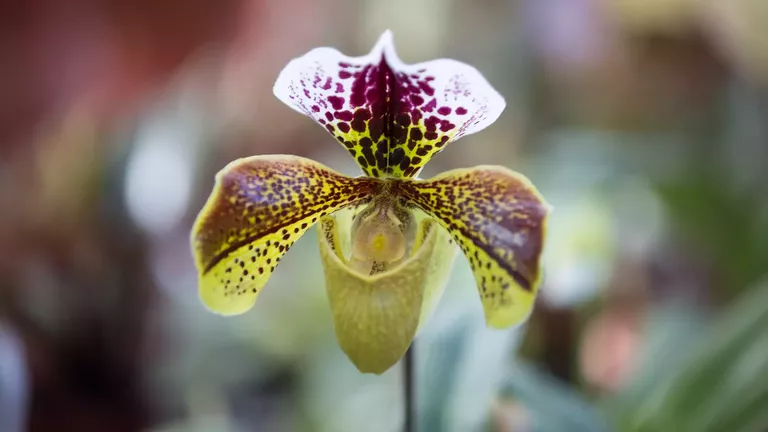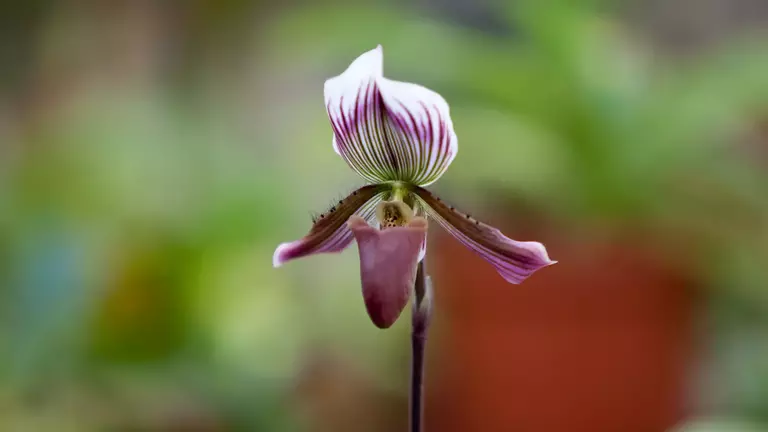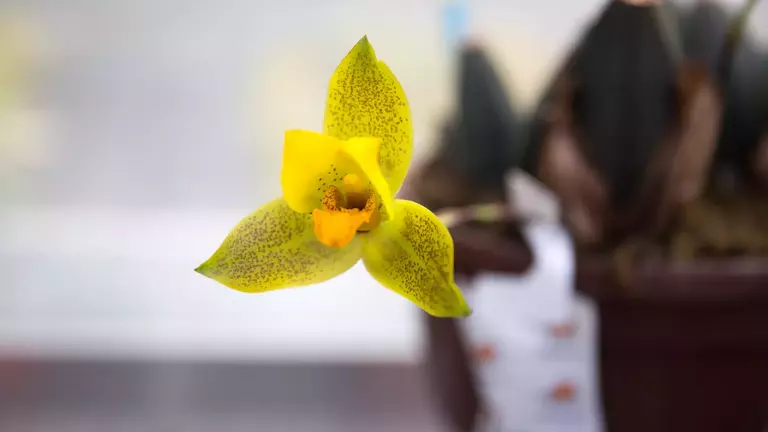The Luxembourg greenhouses have been administered and managed by the Senate since 1879. They are both a place where plants are produced to embellish the gardens and decorate the Luxembourg Place with flowers, and a place where plant heritage dating back to the middle of the 19th century is preserved.
Since the Carthusian estate was attached to the Luxembourg Gardens shortly after the French Revolution (1796), there have always been greenhouses here.
Today, the 3,600 m² site includes :
- an orangery, built in the 1860s but quickly converted to other uses,
- a series of greenhouses, including the orchid greenhouse, made up of 7 "chapels" reproducing the different climates of the plants' regions of origin,
- glazed frames,
- an area for composting plant waste.
"Integrated pest management" is practised in the greenhouses: natural predators (flies, mites) are introduced to combat crop pests (aphids, whiteflies, etc.).

The Luxembourg orchid collection was established in 1838 with a set of plants sent by the Emperor of Brazil’s physician to the Faculty of Medicine of Paris, which was then located on the site of the former Carthusian nurseries, to the south of the current Luxembourg Garden. Thanks to exchanges with horticulturists and collectors, the collection expanded to include 1,200 species. At that time, almost nothing was known about the cultivation of these mysterious plants, especially regarding their reproduction. In 1859, the botanical garden of the Faculty of Medicine was closed, and the Senate agreed to house the orchid collection. A greenhouse was constructed specially for it.
Today, the collection consists of over 10,000 pots belonging to 150 genera, which makes more than 1,350 cultivars, hybrids, and different species of tropical orchids. Among the most notable are: Lycaste skinneri, Peristeria elata, Schomburgkia superbiens, Stenorrhynchus speciosus, and the national collection of orchids from French Guiana.

Paphiopedilum
Paphiopedilum orchids, also known as "Lady's Slippers," are terrestrial, epiphytic, or lithophytic plants that are exclusively native to Southeast Asia (Nepal, Southern China, Vietnam, Thailand, the Philippines, New Guinea, etc.). In Paris, they are cultivated in cold to temperate greenhouses, with temperature and light requirements varying according to their natural habitat—some Paphiopedilums grow at altitudes of 2,500 metres, while others are found at sea level (hybrids often have intermediate needs between those of their parents).
Since its inception, the Luxembourg Gardens’ orchid collection has been fortunate to benefit from the discovery of new cultivation techniques: the use of Rhizoctonia inoculums to encourage seed germination, culturing these strains on a gel-based medium, and since the 1960s, the practice of asymbiotic in vitro sowing in a laboratory dedicated to this purpose.
This exceptional heritage is open to the public each year during the European Heritage Days in September.

Awards presented to the Jardin du Luxembourg at international orchid shows
Awards given to the Luxembourg Garden at international orchid exhibitions:
- 1997: Gold medal at the European Congress in Geneva
- 1999: Silver medal at the London Orchid Show
- 2002: Gold medal at the London Orchid Show
- 2003: Gold medal at the European Congress in London
- 2005: Bronze medal at the World Congress in Dijon
- 2007: Gold medal and the Westonbirt Medal at the London Orchid Show
- 2010: Silver medal at the Chelsea Flower Show
